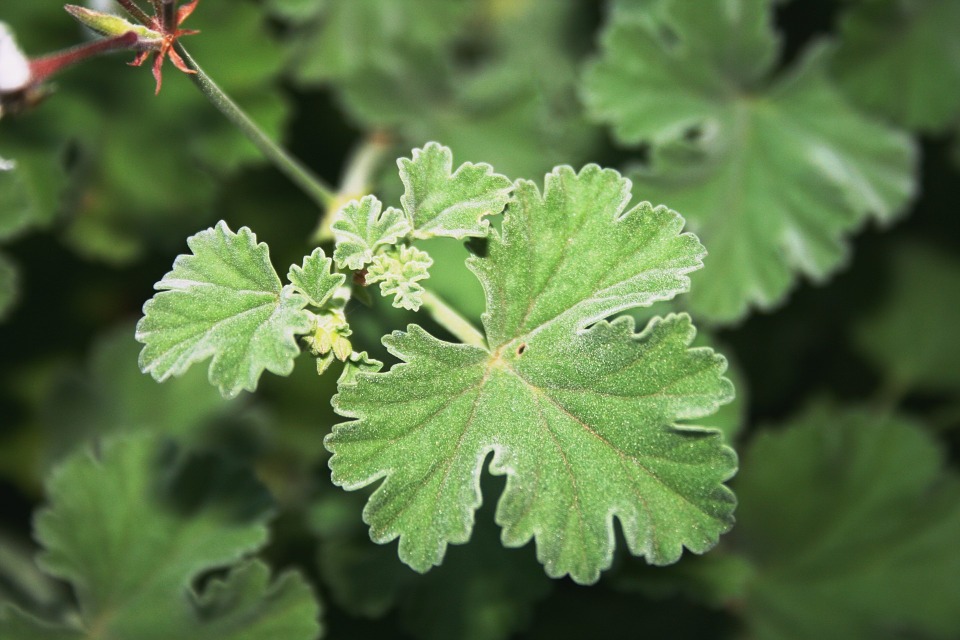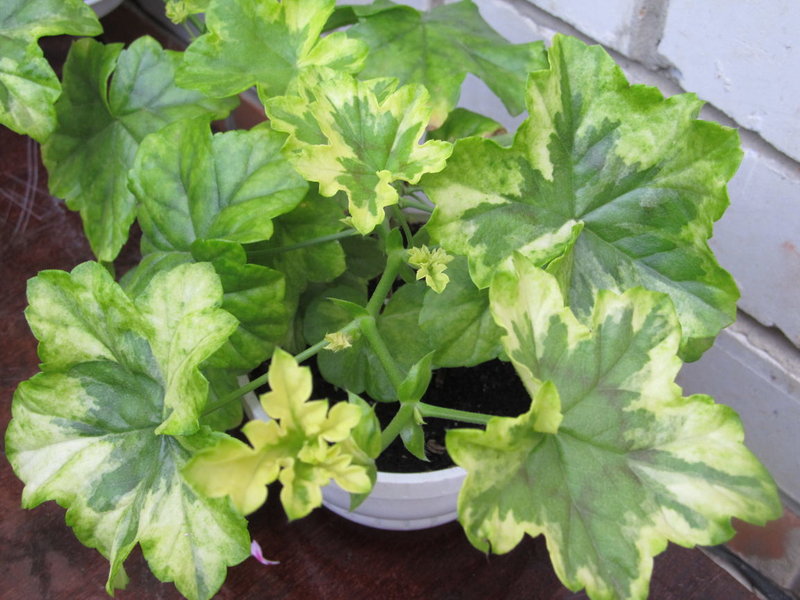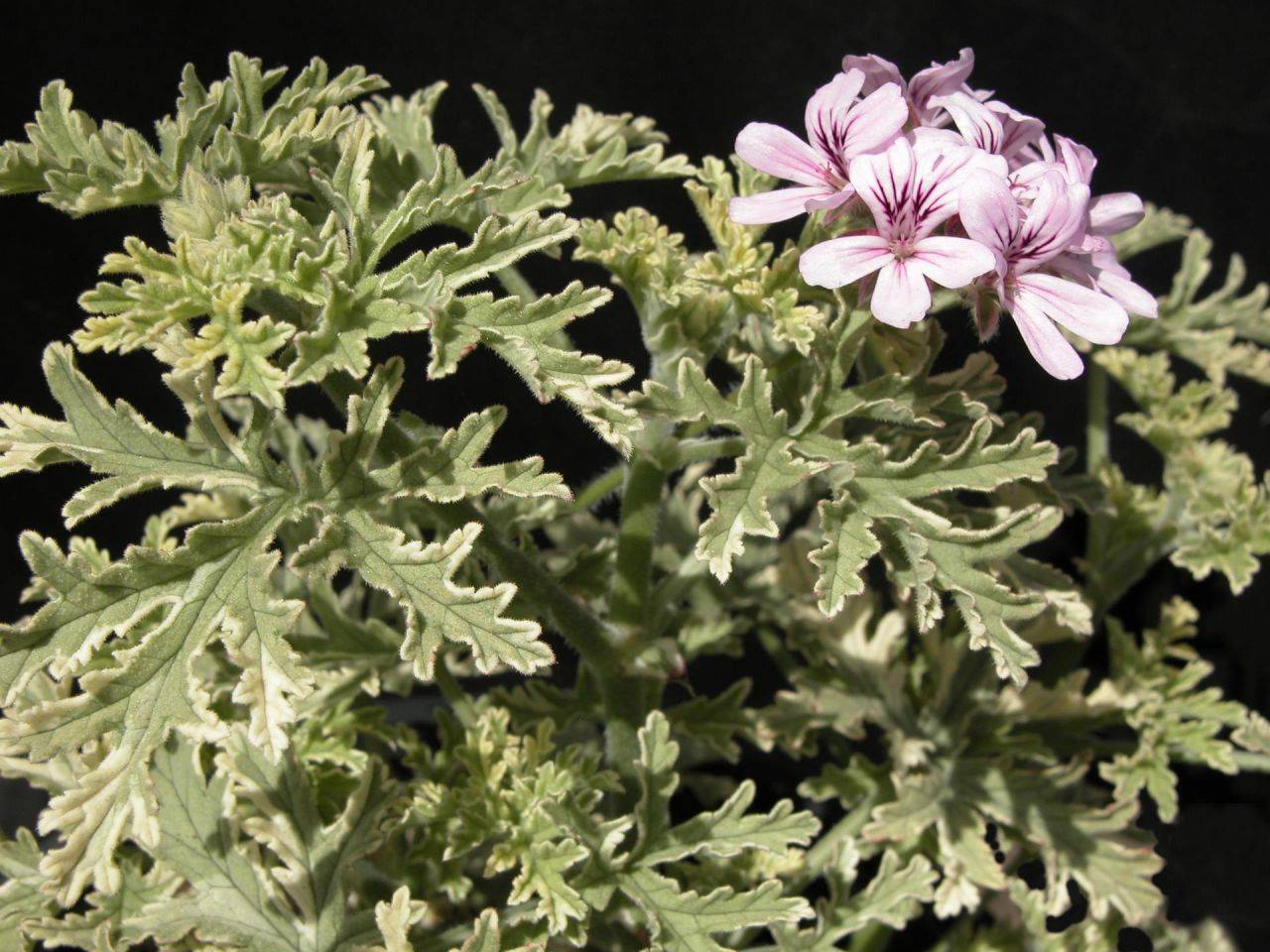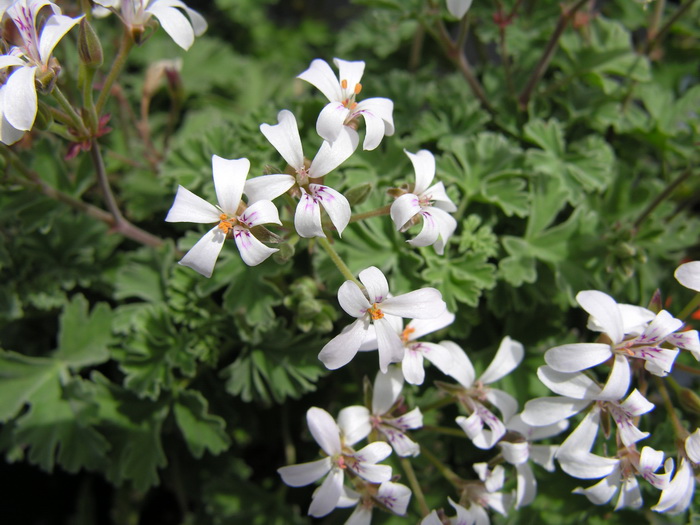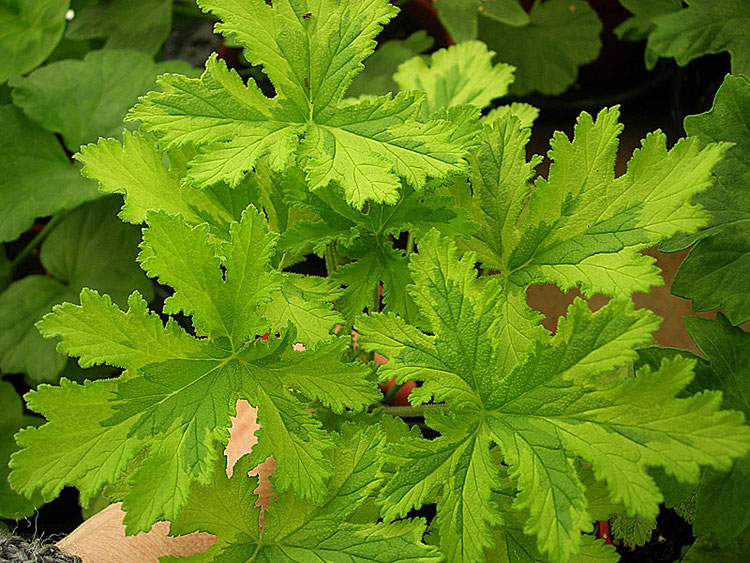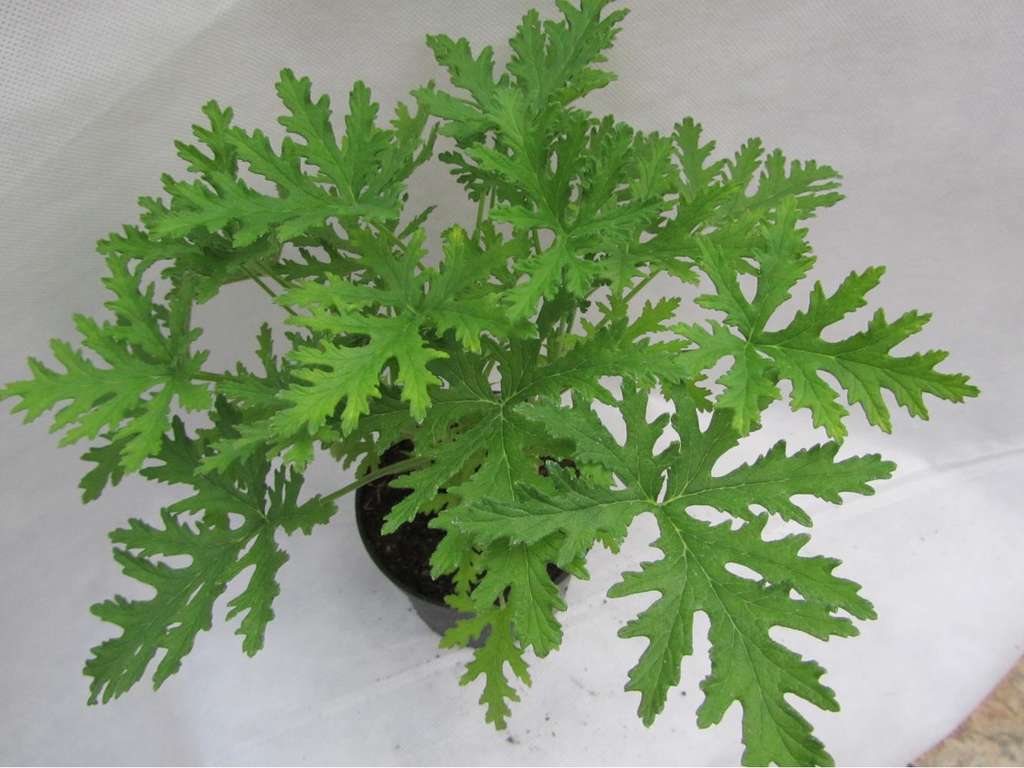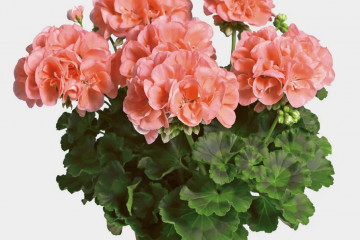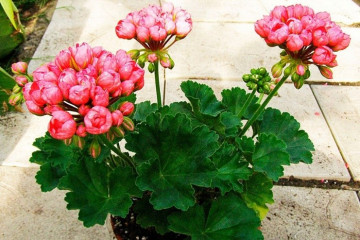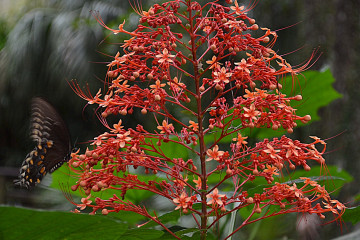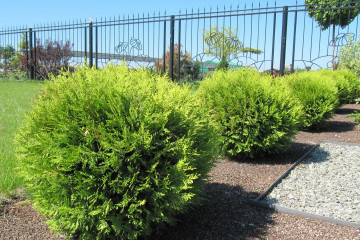Fragrant geranium - varieties of varieties
Content:
It should be noted that there are fragrant varieties of geranium and pelargonium. The difference for the buyer is, first of all, that geraniums are mainly garden plants in open ground, and pelargoniums are almost always grown in indoor conditions. Otherwise, these are plants belonging to the same Geranium family, and ordinary people often confuse them with each other, calling them geranium pelargonium, and vice versa. Within the framework of this material, all varieties of indoor flowers will be considered, which are conditionally included in the fragrant geranium group.
Fragrant geranium - what is it
According to the botanical classification, geranium (lat. Geranium) is a herbaceous perennial plant that prefers dry soils, sometimes winter hardy. Leaves are palmate or palmate, on long petioles, always with pubescence.
The color of flowers, consisting of five petals rounded at the ends, is white, pink, purple, blue. Branched bushes with upward or creeping shoots.
Fragrant pelargonium (lat.Pelargonium odorata) is an independent representative of the Geranium family with a chromosome set that differs from the classical geranium. These plants form bushes from erect shoots or drooping (ampelous). The leaves are pubescent (zonal varieties), as well as smooth, fleshy and shiny (ivy-leaved varieties).
Flowers are of all kinds - five-petal, semi-double, double, reminiscent of roses (rosebund). The color of the petals is almost any, one-color, two-color, multi-color, but never blue or purple.
Description and characteristics of appearance
Fragrant geranium is a trade name. On the price tags you can see the words: colon, perfume, fragrant. Plants of this group may actually belong to pelargoniums or geraniums, but they are always distinguished by inexpressive flowering and a bright, memorable aroma that leaves the foliage, it is enough just to touch it.
Fragrant geraniums look differently. Their foliage can be monochromatic - light or dark green, with a characteristic spot in the middle of a rounded leaf plate (zonal pelargoniums), but the most spectacular varieties with openwork pinnate foliage and variegated, combining several shades at once (yellow, green, pink, purple, etc.) etc.).
History of origin or selection
There are a great many varieties of geraniums (over 400 species). They are found in nature almost all over the world.
For example, in Greece, the species Pelargonium graveolens (geranium graveolens) grows, which served as the ancestor of the varieties:
- Gray Lady Plymouth,
- Cinnamon Rose,
- Graveolens and others.
The curled-leaved variety is known as Pelargonium graveolens cv "Bontrosai" (toss).
All this serves as a vast genetic material for breeders who regularly present the latest developments.
A non-capricious culture is suitable for novice growers, but in addition to benefits, there are contraindications for allergy sufferers.
What is the difference from fragrant pelargonium
Given the colossal variety of varieties and their similarities, a non-specialist can distinguish geranium from pelargonium only by indirect signs, because there are still characteristic differences.
Pelargoniums do not come with flowers of purple and blue, blue shades. In geraniums, flowers have only 5 petals; in addition, there are varieties without flowers at all (non-flowering).
Geranium does not form an ampel, its shoots tend to always stretch upward. Pelargonium is ivy-leaved without a fringe on the leaves, with double flowers and branching long shoots drooping down.
Geranium and fragrant pelargonium: varieties and varieties
On the free sale in specialized nurseries and in the collections of amateurs, you can find several hundred varieties of fragrant geraniums. According to the direction of aromas, the following varieties are distinguished.
Pelargonium lemon
This name was given to a variety of fragrant pelargonium, represented by various varieties, for example, Pelargonium x species Grandeur Odorata Perfum, Mabel Gray.
Typical for her is a tall (35-70 cm) crown with large heart-shaped, strongly dissected, slightly fleecy, bright green, lemon-puffed leaves with pointed tips. It smells like lemongrass or lemon balm.
Geranium with the scent of lemon blooms reluctantly with racemose inflorescences consisting of 3-15 buds, blooming in the form of 5-petal corollas of a light pink shade with purple spots on two petals and a large pistil of the same shade.
Pelargonium Candy Dancer
Fragrant pelargonium with a light sweetish pleasant aroma reminiscent of a mixture of lemon and rose. The variety was bred in 2002.
The very delicate light green foliage is somewhat reminiscent of the hogweed leaf. The leaves are covered with harsh whitish bristles that emit a strong odor when touched. This geranium with carved leaves has 5-petal flowers of light pink or lilac.
Pelargonium "Chocolate"
So far, breeders have not managed to get pelargonium with the exact aroma of chocolate, but work in this direction is underway.
As a first approximation, chocolate notes combined with mints have Chocolate Peppermint leaves. The foliage of this pelargonium resembles a bit maple in shape and has a large brown-burgundy spot in the center.
Pelargonium Ardwick Cinnamon
The species hybrid derived from Pelargonium fragrans has a pleasant aroma of wormwood with notes of cinnamon.
The leaves are typical of royal pelargoniums, harsh, light green, corrugated at the edges, with a velvety pile giving the crown a bluish bloom.
Pelargonium Charity
The leaves of this pelargonium have a lemon-resinous scent. Their color is variegated - it combines sectors of light and dark green.
Blooms in small racemose inflorescences of pink 5-petal flowers. The crown is extended upward. Maintains compactness when pruned regularly.
Pelargonium Gemstone
A bush with even erect shoots up to 60 cm high. Lobed, rough leaves emit a delicate lemon scent.
Flowering, unlike other fragrant varieties, is long-lasting, the flowers are larger than usual and are painted in a bright pink-red hue.
Geranium Gourmet "Gourmet"
The gourmet variety series is a fragrant geranium with a variety of scents: lemon, cinnamon, apple, Coca-Cola, orange (orange), pine needles, roses.
Tall plants up to 60 cm in height have large, strongly dissected, green foliage of a monochromatic or variegated color, and various shades of flowers - a mix from pale pink to deep burgundy.
Home care for scented geraniums
According to the owners of fragrant geraniums, they are less capricious in care than pelargoniums, which are considered one of the most unpretentious indoor flowers. It is enough to pay attention to the bush once a week in order to inhale its pleasant aroma for many years.
Illumination and temperature conditions
Like all members of the Geranium family, scented pelargoniums are very fond of sunlight. On the southern windows, their crown will be thicker and brighter, and in the shade it will darken and stretch.
The optimum temperature for keeping in the summer is +18 .. + 24 ° С. In winter, you can lower the air temperature to + 15 ° C, especially if there is a lack of light.
Watering rules and humidity
Watering is necessary only when the soil in the pot dries out 3-4 cm deep. The irrigation regime is selected depending on the season.
- In summer, in the heat, when geranium is growing actively, it blooms, it happens that daily watering is also required.
- In winter, when the plant is almost asleep, the roots absorb moisture slowly, watering is worth a couple of times a month.
Permissible air humidity is within 40-80%, foliage spraying is not required even in the heat.
Top dressing and soil quality
Soils unsuitable for geraniums: heavy loam, oversaturated with humus or humus, black soil. Their root system needs air intake, so the structure of the soil must be loose, breathable, not retaining moisture for too long.
The optimal acid-base reaction is pH = 5.5-6.0. It is with such indicators that fragrant geraniums and pelargoniums grow best.
Top dressing is performed from April to October with an interval of 2 weeks. Only specialized complex mineral fertilizers are used, for example, Agricola for Blossoming.
Flower container size
The root system of geraniums is much smaller than the ground part. The maximum depth is 25 cm. The pot is chosen for a seedling no more than 9 cm in diameter, gradually increasing in size by 1-1.5 cm every six months for the first 2 years. In the 3rd year, you can do without a transplant, and from the 4th year the bush needs rejuvenation.
Pruning and replanting
Pruning of bushes is performed in the spring, in the first half of March, when daylight hours increase. All elongated and deforming shoots are removed. It is enough to leave only 15 cm from the soil level from the crown for the plant to start vigorously in growth.
The transplant is performed to renew the soil saline with irrigation and to increase the volume of the pot. Slow growing dwarf varieties are transplanted only once a year - in March.
Features of flowering plants
Geranium inflorescences require a lot of sunlight to form. If the pot is on the north window in mid-latitudes, then flowering may not come at all. The optimal daylight hours are 14 hours.
- A period of activity and rest
Geranium is capable of blooming year-round with 14 hours of daylight hours. In the absence of illumination, the first flowers will bloom in April, and the last in October.
- Types and shape of flowers
The traditional corolla shape for scented geraniums is 5-petal. Some varieties of pelargonium bloom with double and semi-double flowers. Umbellate inflorescence in different varieties consists of 3-25 buds.
Flower propagation methods, when it is better to do it
All varieties of fragrant geraniums are very easy to reproduce, so in case of serious problems with the bush, it is always easier to take a cutting and root.
- Propagation by cuttings
Cuttings can be taken at any time from April to October. Often, cuttings are performed in March at the same time as pruning.A cut shoot with several leaves must be kept in the air for 4 hours to dry the cut. Then it is immediately planted in a pot or placed in a glass of water.
Watering until the roots appear on the cutting is done only after the soil has completely dried out, otherwise there is a great risk of decay. For control, it is worth using a transparent container.
- Seed propagation
Geraniums are capable of propagating by seed, which opens up opportunities for crossbreeding. Sowing is carried out in March-April. The germination period is up to 2 weeks.
Seedlings dive at the stage of 3-4 true leaves. Further, they should be looked after as adults. It is important not to overdo it with watering, since all seedlings are sensitive to it.
- By dividing the bush
Old bushes can be divided into parts, separating each with a bunch of roots. Before planting, leave to dry for several hours, sprinkling the slices with crushed coal.
The method is good for tall and fast growing varieties.
Growing problems, diseases and pests
Geranium can infect common indoor pests: thrips, aphids, spider mites, scale insects. They are capable of causing great harm to flowers. If signs are detected, the plant should be treated with "Fitoverm" or "Aktara".
Diseases rarely affect geraniums with proper agricultural technology. Rot indicates a violation of the irrigation regime. The yellowness of the leaves may indicate a root burn with fertilizers, hypothermia and overdrying. When the air temperature drops to + 10 ° C, many varieties stop growing and may die.
It is not at all difficult to grow the most fragrant geranium on your windowsill. You can buy cuttings in specialized stores, collectors and even on the Internet. An unpretentious fragrant plant will adorn any home.

